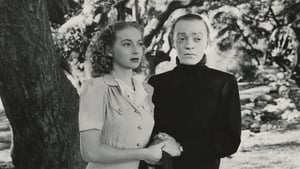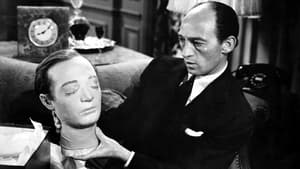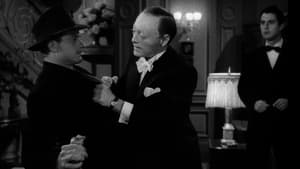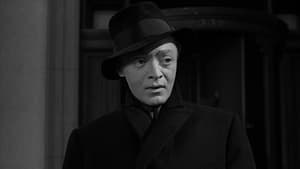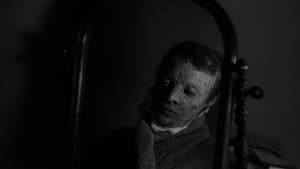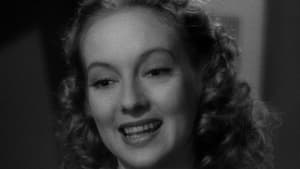Video Sources 0 Views
- Watch trailer
- The Face Behind the Mask 1941 Colorized

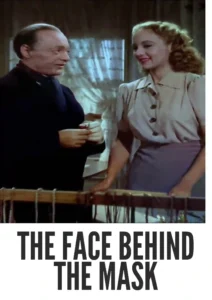
Synopsis
Table of Contents
ToggleHidden Identity and Dark Secrets: The Face Behind the Mask (1941) in Stunning Color

Immerse yourself in the shadowy world of The Face Behind the Mask, a gripping crime drama from 1941, now beautifully colorized for a mesmerizing viewing experience. Starring the legendary Peter Lorre, this film explores themes of identity, survival, and the human cost of desperation during the immigrant experience. Often compared to the German film Der Mann, der den Mord beging (The Man Who Committed the Murder), this movie offers a powerful narrative and stellar performance. Perfect for fans of classic cinema and those seeking a thought-provoking story, this HD download brings a poignant and compelling piece of film history to your screen.
The Face Behind the Mask Storyline: A Tale of Resilience and Transformation
The Face Behind the Mask tells the story of Janos Szabo (Peter Lorre), a Hungarian immigrant who arrives in America full of hope, only to have his dreams shattered by a disfiguring accident. Severely burned in a boarding house fire, Janos is left with a grotesque facial disfigurement. Shunned by society, he descends into the criminal underworld to survive.As Janos navigates this dark new world, he adopts a new identity and becomes a skilled craftsman of masks, hiding his true face from the world. Janos walks a fine line between his desire for a normal life and the ruthlessness required to survive in the criminal underworld. His path crosses with that of a kind and compassionate woman (Evelyn Keyes), who sees beyond the mask to the man beneath. The film explores themes of identity, acceptance, and the choices one makes when pushed to the brink. The Face Behind the Mask is a powerful and moving drama that offers a nuanced portrayal of a man struggling to find his place in a world that has rejected him.
Movie Cast
The film boasts a talented cast, bringing depth and authenticity to this gripping story:
- Peter Lorre as Janos Szabo / Johnny
- Evelyn Keyes as Helen Williams
- Miles Mander as Mr. Grogan
- George E. Stone as Dinky
- Don Beddoe as Lt. O’Malley
Movie Genre
The Face Behind the Mask is a compelling crime drama that delves into the depths of human resilience and despair. With elements of suspense and noir, the film offers a thought-provoking exploration of identity and morality.
Historical Context: Social Commentary and Wartime Cinema
Released in 1941, The Face Behind the Mask reflects the social anxieties and wartime sentiment of the era. The film touches upon the immigrant experience, the struggles of marginalized individuals, and the moral ambiguities of a world on the brink of war. Peter Lorre’s compelling performance and the film’s dark, atmospheric style make it a standout example of early 1940s cinema.
Colorization Details
This colorized version of The Face Behind the Mask has been meticulously restored using modern digital techniques, enhancing the visual impact while preserving the film’s original atmosphere. The colorization process involved a careful analysis of the original black and white footage, with colors chosen to enhance the emotional depth and visual clarity of each scene. While the specific software used remains proprietary, the techniques employed include advanced algorithms for color palette selection and image enhancement. This painstaking process breathes new life into the characters and settings, making the story even more captivating for modern audiences.
Technical Details
- Director: Robert Florey
- Screenplay: Samuel Ornitz, S. Sylvan Simon, Paul Jarrico, Arthur Levinson
- Based on: the story by Thomas Monroe and Endre Bohem
- Cinematography: Franz Planer
- Edited by: Reg Browne
- Production Company: Columbia Pictures
- Distributed by: Columbia Pictures
- Runtime: 60 minutes
Technical Specifications
- Download Format: MP4
- Resolution: HD (1080p)
- Compatibility: Compatible with most devices, including smartphones, tablets, computers, and smart TVs.
Reviews and Critical Reception
The Face Behind the Mask (1941) is a critically acclaimed film, lauded for Peter Lorre’s powerful performance and its thought-provoking narrative. Often cited as one of Lorre’s most memorable roles, the film offers a nuanced portrayal of a man struggling to maintain his humanity in the face of adversity.
FAQs
- Q: What is The Face Behind the Mask about?
- A: The Face Behind the Mask tells the story of a disfigured immigrant who descends into the criminal underworld to survive.
- Q: Is The Face Behind the Mask (1941) a well-known Peter Lorre film?
- A: While not as widely known as some of his other works, The Face Behind the Mask is a highly regarded film and features one of Peter Lorre’s most memorable performances.
- Q: Is this version of The Face Behind the Mask colorized?
- A: Yes, this version has been professionally colorized to enhance the viewing experience.
- Q: What makes The Face Behind the Mask interesting for Peter Lorre fans?
- A: The film offers a rare opportunity to see Peter Lorre in a sympathetic and complex role, showcasing his versatility as an actor.
- Q: What is the download format?
- A: The download format is MP4, which is compatible with most devices.
- Q: What resolution is the download?
- A: The resolution is HD (1080p), providing a high-quality viewing experience.
Download Now in HD!
Watch The Face Behind the Mask Today!
